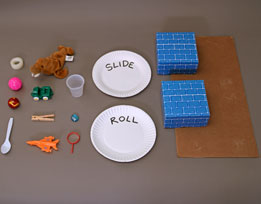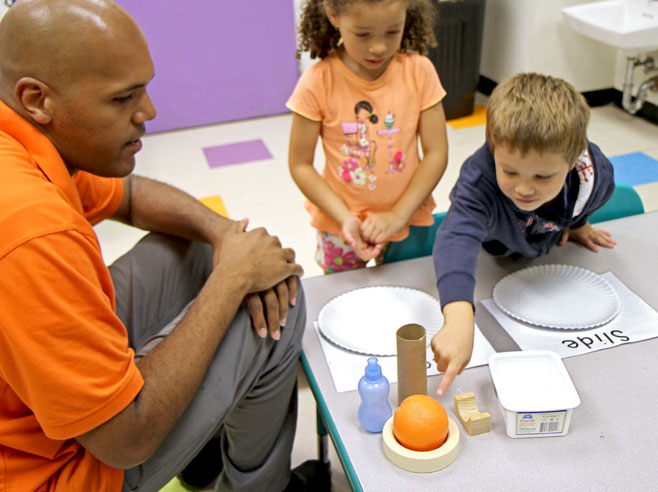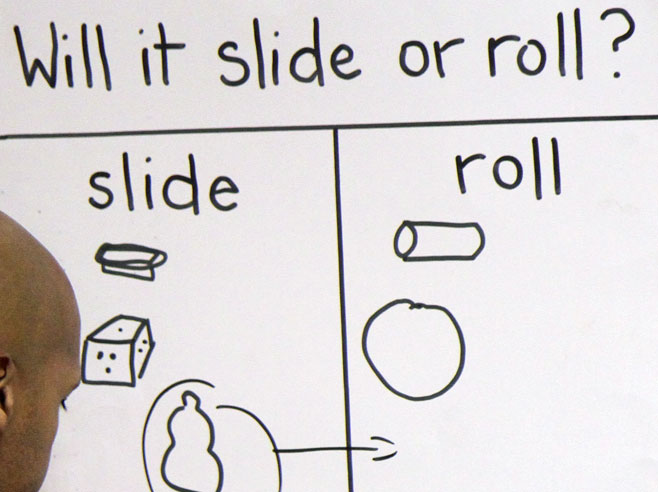Children discuss their sorting of sliding and rolling objects from two earlier activities. They make and test predictions about how new objects will move down a ramp.
Materials

- Blocks to prop up ramp
- Cardboard ramp sheet
- Chart paper and marker
- Sorting objects and plates (or containers) from the Sorting Objects That Slide and Roll and Sorting Objects Outside activities
- Additional sorting objects (such as a ruler, spool, plastic clothespin, roll of tape)
Preparation
- Display the objects from the Guided Small Group and Outdoor sorting activities in two labeled sets—SLIDE and ROLL—as sorted by the children during the activities.
- Write the question “Will It Slide or Roll?” at the top of the sheet of chart paper. Then draw two columns. Label the columns “Slide” and “Roll.”
- Set up the ramp to face a wall so that rolling objects don’t roll too far. Test out the new objects to determine how steep the ramp needs to be in order for all the objects to either slide or roll.
Directions: Lesson 4
Circle Time: Wrap-Up
This activity reviews the explorations done earlier, during Sorting Objects That Slide and Roll and Sorting Objects Outdoors.
- Draw attention to the two groups of sorted objects from the previous sorting activities. Ask children to compare the two sets of objects:
- What do you notice about the shape of things that slide?
- What do you notice about the shape of things that roll?
- Display the chart paper with the question “Will It Slide or Roll?” Show the children the new collection of objects, one by one. Based on their previous experience, ask them to predict whether each object will slide or roll when placed on a ramp. Why do you think that?
- Record children’s prediction on the chart by drawing a sketch of the object in the matching column.
- Children may have different opinions. If they do not reach a consensus through discussion, choose how to record the prediction (e.g., by taking a vote, choosing a child to decide, or documenting both predictions).
- Draw attention to the ramp you prepared earlier (see Preparation section). Have children test each object on the ramp. Does it slide or roll? Why?
- If the prediction on the chart is correct, draw a check mark or star next to the picture of the object. If the prediction is not correct, draw an X through the picture and redraw the picture in the correct column.
- Once all objects have been recorded, review the results. Ask children to compare how many objects roll to how many objects slide. Possible discussion ideas:
- How many objects roll down the ramp? Let’s count. How many objects slide down the ramp? Let’s count.
- Do more objects roll or slide?
- How many more objects roll than slide (or slide than roll)?
- Note: For the roll of tape (and other objects), both predictions—slide and roll—could be correct. When placed on its flat side, like a plate, the tape will slide down the ramp; when placed upright, like a wheel, the tape will roll. Encourage children to tell you what to write on the chart paper about the different ways a roll of tape moves.


